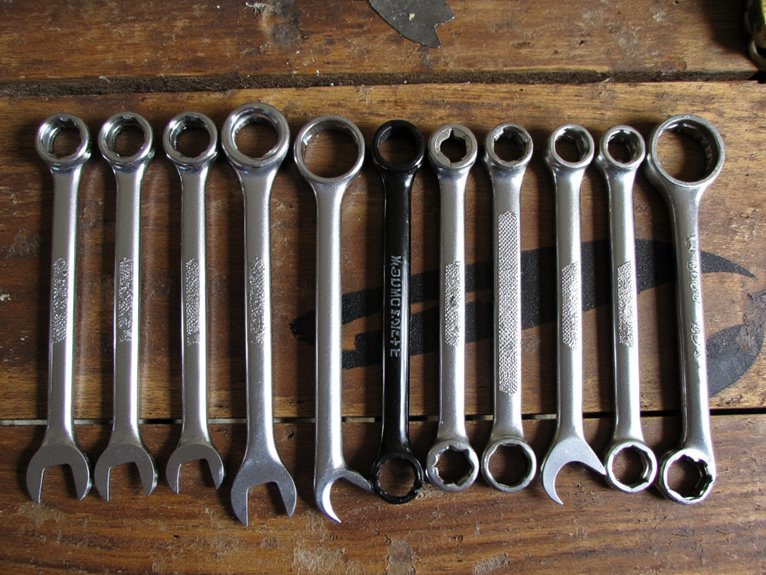Can I Put a Hydration Bladder in Any Backpack?
Not all backpacks are created equal, and certain features are essential to guarantee a secure and functional fit for a hydration bladder. A compatible hydration bladder provides a secure fit, easy access, and hassle-free hydration. Consider the backpack's hydration sleeve or pocket size, bladder dimensions, and connection type. Dedicated hydration compartments, hydration ports, and adjustable torso lengths are desirable features. Verify the backpack's material and construction can withstand the weight and moisture of the bladder. By evaluating these factors, you can make an informed decision about whether your backpack can accommodate a hydration bladder, and what features to look for in a hydration-compatible pack.
We are supported by our audience. When you purchase through links on our site, we may earn an affiliate commission, at no extra cost for you. Learn more. Last update on 6th January 2026 / Images from Amazon Product Advertising API.
Understanding Hydration Bladder Compatibility
When selecting a hydration bladder for a backpack, one essential factor to evaluate is compatibility, as an incompatible system can lead to leakage, damage, or poor performance.
A compatible hydration bladder guarantees a secure fit, easy access, and hassle-free hydration on the go.
To confirm compatibility, consider the backpack's hydration sleeve or pocket size, as well as the bladder's dimensions and connection type.
Additionally, check the bladder's material and construction to guarantee it can withstand the rigors of outdoor activities.
Backpack Features to Look For
A hydration bladder's compatibility with a backpack is just the first step in facilitating a seamless hydration experience, as the backpack's features also play a significant role in promoting easy access and convenience.
When selecting a backpack, look for features that complement your hydration bladder. A dedicated hydration compartment or sleeve is essential, providing a secure and organized space for your bladder.
Additionally, consider backpacks with hydration ports or openings that allow for easy tube routing. Other desirable features include adjustable torso lengths, hip belt pockets, and weather-resistant materials.
Hydration Bladder Size Matters
The capacity of a hydration bladder is a critical consideration, as it directly impacts the duration of hydration and overall convenience during outdoor activities.
A larger bladder may provide extended hydration, but it may also add bulk and weight to your backpack.
Conversely, a smaller bladder may be more compact, but it may require more frequent refills.
Imagine running out of water on a scorching hot day, miles away from civilization.
Picture having to stop and refill your bladder every hour, disrupting your hiking rhythm.
Envision the relief of having a sufficient water supply, allowing you to focus on the breathtaking scenery around you.
Backpack Material and Durability
Beyond capacity, the hydration bladder's integration with a backpack relies on the material and durability of the pack itself, as a sturdy and water-resistant design safeguards the bladder remains protected and functional.
A backpack made from durable, water-resistant materials such as nylon or polyester is essential for hydration bladder compatibility.
The material should be able to withstand the weight and moisture of the bladder, ensuring the pack remains functional and dry.
A well-constructed backpack with reinforced seams and stress points also prevents leakage and damage to the bladder.
A durable backpack provides a reliable foundation for a hydration system, allowing for a safe and convenient way to stay hydrated on the go.
Inspecting Your Backpack's Pockets
Pockets strategically placed throughout the backpack play a crucial role in organizing the hydration bladder and its associated accessories, allowing for easy access and efficient storage.
When inspecting your backpack's pockets, consider the following key factors:
Are the pockets specifically designed for hydration bladders, or can they be repurposed?
Are the pockets easily accessible, or do they require digging through other compartments?
Are the pockets large enough to accommodate the bladder, tube, and bite valve?
Tube Management and Storage
Effective tube management and storage are vital to maintaining a tidy and organized backpack.
Uncontrolled tubes can lead to clutter, tangling, and damage, making it essential to implement strategies for securing excess length and preventing tube clutter.
Tube Clutter Control
Properly managing the hydration tube is essential to preventing clutter and ensuring easy access to the bladder's drinking valve. A disorganized tube can lead to frustration and decreased performance on the trail. Effective tube management is vital for a hassle-free hydration experience.
Keep the tube securely attached to the backpack's shoulder strap or waist belt to prevent it from dangling and getting in the way.
Use tube clips or retainers to organize excess tubing and minimize clutter.
Consider using a tube cover or insulation to protect the tube from freezing temperatures and keep liquids at the desired temperature.
Securing Excess Length
Securing excess length is vital to maintaining a tidy and organized backpack.
One effective approach is to use tube management clips or straps, which can be attached to the backpack's interior or exterior. These clips keep the excess tubing neatly coiled and out of the way, reducing clutter and making it easier to access the hydration bladder.
Additionally, some backpacks come with built-in tube management systems, such as dedicated storage compartments or Velcro straps. By utilizing these features, you can confirm a streamlined and organized hydration system that won't hinder your outdoor adventure.
Hydration Bladder Placement Options
Optimizing backpack space, hikers and outdoor enthusiasts often face the dilemma of where to place their hydration bladder. This decision can greatly impact the overall comfort and functionality of the backpack.
When it comes to hydration bladder placement options, consider the following:
- Against the back panel: This placement allows for easy access and minimizes movement, but may reduce ventilation.
- In a dedicated sleeve: This option keeps the bladder organized and protected, but might limit flexibility in terms of space allocation.
- Near the top of the pack: This placement enables quick refills and allows for easy cleaning, but may cause the bladder to shift during wear.
Adapting to Unconventional Backpacks
When working with unconventional backpacks, it's essential to contemplate the compatibility of the hydration bladder with the pack's design.
This may require custom installation options, such as modifying the bladder's hose routing or attachment points to guarantee a secure and functional fit.
Compatibility Considerations
While many backpacks are designed with hydration bladders in mind, others may require creative problem-solving to guarantee a secure and functional fit. This is especially true for unconventional backpacks that don't have built-in hydration compartments.
In such cases, it's essential to assess the backpack's internal layout, material, and design features to determine the best approach for accommodating a hydration bladder.
Some key considerations include:
- Space constraints: Will the bladder fit comfortably without compromising other gear?
- Material compatibility: Will the bladder's material react adversely with the backpack's fabric?
- Structural integrity: Will the backpack's construction support the weight and movement of the bladder, thereby facilitating a safe and stable arrangement?
Custom Installation Options
Many unconventional backpacks require innovative solutions to accommodate a hydration bladder, and custom installation options can help overcome these limitations.
In such cases, adapting the backpack to fit the bladder is often necessary. This may involve attaching additional straps, modifying the pack's compartments, or using adhesive-backed Velcro to secure the bladder.
Custom installation may also require creative problem-solving, such as using zip ties or cord locks to manage excess tubing.
By thinking outside the box, outdoor enthusiasts can successfully integrate a hydration bladder into an unconventional backpack, ensuring convenient access to hydration on the go.
With a little creativity, even the most unlikely packs can be converted into hydration-friendly companions.
Choosing the Right Hydration Pack
Selecting the right hydration pack is essential, as it directly impacts the overall comfort and performance of your outdoor adventure. A well-chosen hydration pack can make all the difference between a enjoyable and an exhausting experience.
When choosing a hydration pack, consider the following key factors:
Capacity: Verify the pack can hold enough water for your entire trip, plus some extra for emergencies.
Comfort: Look for padded shoulder straps and a breathable back panel to prevent chafing and discomfort.
Accessibility: Opt for a pack with easy-to-use zippers and compartments to keep your gear organized and within reach, making it easy to access what you need quickly.


